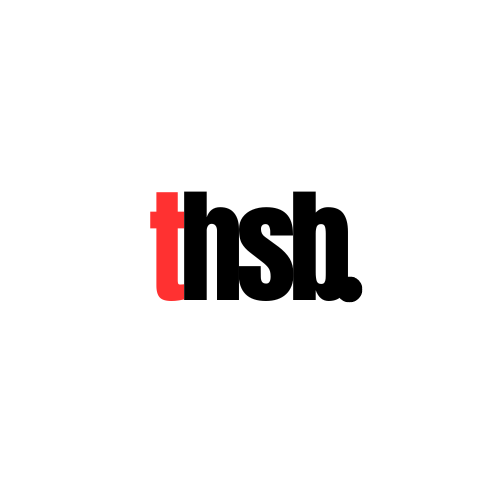Imagine a world where every social interaction feels like solving a complex puzzle. For individuals with Type 2 Autism, this is their daily life. As a parent, teacher, or friend of someone on the autism spectrum, you might have noticed their unique way of seeing the world—a challenging and beautiful perspective.
Meet Sarah, a bright 10-year-old with Level 2 Autism. Her passion for memorizing train schedules is unmatched, yet she struggles to maintain a simple conversation with her classmates. Sarah’s story isn’t uncommon. Millions of people worldwide navigate life with Autism Spectrum Disorder (ASD), each facing their own set of hurdles and triumphs.
But what exactly is Type 2 Autism? How does it differ from other forms of autism? Type 2 Autism is considered moderate in severity compared to severe autism, which is Level 3.
And most importantly, how can we support individuals like Sarah to thrive in a world that often misunderstands them?
In this post, we’ll unravel the complexities of Type 2 autism, shedding light on its symptoms, diagnosis, and the substantial support these individuals need. Whether you’re a concerned parent, a curious educator, or someone looking to understand neurodiversity better, this guide will help you see beyond the label and appreciate the unique strengths of this neurodevelopmental disorder.
Let’s embark on this journey of understanding together because knowledge is the first step towards creating a more inclusive world for everyone on the autism spectrum.
Understanding Autism Spectrum Disorder (ASD)

Autism Spectrum Disorder (ASD) is a neurodevelopmental disorder that affects how people interact, communicate, learn, and behave. It’s a lifelong condition that impacts millions of people worldwide.
Definition and Overview of ASD
ASD is characterized by:
Challenges in social communication and interaction
Restricted and repetitive behaviors or interests
Differences in sensory processing
People with ASD may:
Have trouble with back-and-forth communication
Struggle to interpret nonverbal communication cues
Show intense focus on specific topics or objects
Need different levels of support in daily life
It’s important to note that ASD is a spectrum, meaning that symptoms and their severity can vary widely from person to person. Individuals with high functioning autism, or Level 1 Autism, require minimal support in their daily lives.
DSM-5 Criteria for Autism Diagnosis
The Diagnostic and Statistical Manual of Mental Disorders, 5th Edition (DSM-5), provides the criteria for diagnosing ASD. Healthcare professionals use this manual, which the American Psychiatric Association created, to identify mental illnesses.
The DSM-5 made significant changes to how ASD is classified:
It combined previously separate diagnoses (like Asperger’s syndrome and autistic disorder) into one umbrella diagnosis of ASD, including pervasive developmental disorder (PDD) under the ASD umbrella.
It reclassified autism symptoms into two main areas:
Deficits in social communication and social interaction
Restricted, repetitive behaviors and interests
It introduced a severity level system to indicate how much support an individual needs
These changes aim to provide a more accurate and consistent way to diagnose ASD across different healthcare providers and settings.
Characteristics of Type 2 Autism: Repetitive Behaviors

Repetitive Behaviors and Restricted Interests
Individuals with Type 2 Autism, also known as Level 2 Autism, show moderate impairment in social communication and interactions. They often display:
Repetitive behaviors that can interfere with daily activities
Restricted interests that are unusually intense or focused
Difficulty with changes in routine, often showing distress at small changes
These behaviors may include:
Repeating certain movements or words
Following strict routines
Having very specific interests or hobbies
Social Communication Challenges
People with Type 2 Autism face moderate challenges in social communication. These difficulties can include:
Trouble starting and keeping conversations going
Problems understanding social cues
Difficulty adapting to changes in routines
Struggles with developing and maintaining relationships
These challenges are often evident from early childhood and significantly impact the child’s daily life.
Some specific challenges they might face:
Trouble using or understanding nonverbal communication like gestures or facial expressions
Difficulty with back-and-forth communication
Problems sharing interests or emotions with others
It’s important to note that while these challenges can be significant, individuals with Type 2 Autism often have some verbal communication skills. However, they typically need support to navigate daily life and social situations.
Understanding these characteristics can help families, educators, and healthcare providers better support individuals with Type 2 Autism and help them develop their strengths while addressing their challenges.
Diagnosis and Assessment

How is Type 2 Autism Diagnosed?
The process of diagnosing Type 2 Autism, or any form of Autism Spectrum Disorder (ASD), involves two main phases: screening and assessment.
Screening:
Uses tools like parent reports and professional observations
Helps identify children who may need a full evaluation
Assessment:
Involves more comprehensive diagnostic tests and evaluations
Conducted by specialists such as developmental pediatricians, child neurologists, or psychologists
The diagnosis usually relies on two key sources of information:
Parents’ or caregivers’ descriptions of the child’s development
A professional’s observation of the child’s behavior
It’s important to note that no single tool should be used as the sole basis for diagnosis. A comprehensive assessment often includes:
Developmental history
Behavioral observations
Cognitive and language evaluations
Assessment of adaptive functioning
Role of the Diagnostic and Statistical Manual (DSM-5) in Diagnosis
The Diagnostic and Statistical Manual of Mental Disorders, 5th Edition (DSM-5) plays a crucial role in diagnosing ASD, including Type 2 Autism.
Key points about the DSM-5’s role:
It provides standardized criteria for diagnosing ASD
The DSM-5 outlines three levels of autism, including Level 2, which requires substantial support
According to the DSM-5, an autism diagnosis requires:
Persistent deficits in social communication and social interaction across multiple contexts
Restricted, repetitive patterns of behavior, interests, or activities
The DSM-5 combined previously separate diagnoses (like Asperger’s syndrome) into one umbrella diagnosis of ASD. Childhood disintegrative disorder (CDD) was also a separate diagnosis in the DSM-IV, characterized by developmental regression resulting in severe autism with intellectual disability.
It introduced a severity level system to indicate how much support an individual needs
Healthcare professionals use these criteria to make accurate diagnoses and determine the appropriate level of support needed for individuals with Type 2 Autism.
Impact on Daily Life

Educational Considerations for Individuals with Type 2 Autism
Type 2 Autism can create significant challenges in learning and education. These challenges often stem from:
Difficulty with social communication
Problems with adaptability
Struggles with executive functioning skills
Issues with motor control
To support students with Type 2 Autism, schools often provide accommodations such as:
Scribing or reading support
Providing sensory breaks
Modifying academic work to suit individual needs
These accommodations help create a more inclusive learning environment and can significantly improve educational outcomes for students with Type 2 Autism. Additionally, individuals with severe autism, or Level 3, require very substantial support in their daily lives.
Socialization and Relationship Challenges
Individuals with Type 2 Autism often face significant hurdles in social situations. Some common challenges include:
Difficulty engaging in conversations
Trouble making eye contact with peers
Struggles with understanding social cues
Problems initiating and maintaining relationships
Challenges in developing essential life skills
These social difficulties can impact various aspects of life, from forming friendships to participating in group activities. However, with appropriate support and interventions, individuals with Type 2 Autism can improve their social skills and build meaningful relationships.
It’s important to remember that while these challenges are common, each person with Type 2 Autism is unique. Their experiences and needs may vary, highlighting the importance of individualized support and understanding.
Support and Treatment Options

Parental Role and Support Strategies
Parents play a vital role in supporting children with Type 2 Autism. Their involvement is crucial for:
1. Providing a nurturing environment
2. Facilitating early intervention
3. Offering ongoing support and treatment
Parents can make a significant impact on their child’s development by:
Creating routines and clear expectations
Learning about ASD to develop effective strategies
Collaborating with healthcare professionals
Participating in therapy sessions
Implementing supportive strategies at home
Research shows that active parental involvement in early intervention is linked to better outcomes for children with ASD.
Treatment Options for Type 2 Autism
Early intervention is key for improving outcomes in children diagnosed with Type 2 Autism. Common treatment options include:
1. Behavioral therapy: This can help address challenging behaviors and teach new skills.
2. Speech therapy: This focuses on improving communication skills.
3. Occupational therapy: This helps develop essential life skills and improve motor control.
These therapies aim to address various aspects of autistic disorder and can be tailored to each child’s specific needs.
It’s important to note that treatment plans should be individualized, as each person with Type 2 Autism has unique strengths and challenges. Working closely with healthcare providers can help develop the most effective treatment strategy for your child.
Remember, while the journey may be challenging, with the right support and interventions, individuals with Type 2 Autism can make significant progress and lead fulfilling lives.
Embracing Neurodiversity and Strengths

Positive Aspects of Type 2 Autism
While Type 2 Autism presents challenges, it’s important to recognize and celebrate the unique strengths that often come with this neurodevelopmental difference:
1. Exceptional memory: Many individuals with Type 2 Autism have remarkable ability to recall details and information.
2. Attention to detail: They often notice and remember small details others might overlook.
3. Problem-solving skills: Their unique thinking can lead to creative solutions to complex problems.
4. Special interests: Their intense focus on specific topics can lead to deep knowledge and expertise in those areas.
These strengths can be valuable in many settings, including school, work, and personal pursuits. For example, a child’s interest in trains could lead to a career in engineering or transportation planning.
Fostering Independence and Self-Advocacy
Helping individuals with Type 2 Autism develop independence and self-advocacy skills is crucial for improving their quality of life. This can involve:
1. Teaching communication skills: This includes verbal and non-verbal communication methods.
2. Developing social skills: Practice in social situations can help improve interactions with others.
3. Encouraging self-advocacy: Teaching individuals to express their needs and preferences.
4. Building life skills might include personal care, household tasks, or job skills.
Strategies to foster independence and self-advocacy:
Use visual aids and clear instructions
Break tasks into smaller steps
Provide opportunities for practice in real-life situations
Encourage decision-making
Teach problem-solving strategies
By focusing on these areas, individuals with Type 2 Autism can gain more control over their lives and better navigate the world around them. This not only improves their independence but also boosts self-esteem and overall well-being.
Remember, every person with Type 2 Autism is unique. The goal is to help each reach their full potential and lead a fulfilling life, whatever that means for them.
Conclusion

Summary of Key Points on Type 2 Autism
Type 2 Autism, also known as Level 2 Autism, is a neurodevelopmental disorder that causes moderate impairment in social communication and interactions. People with this condition face significant challenges in their daily lives and require substantial support.
Key points to remember:
1. Individuals with Type 2 Autism often struggle with verbal and nonverbal communication.
2. They may have restricted interests and show repetitive behaviors.
3. Adapting to changes in routine can be very difficult for them.
4. They need considerable help to navigate social situations and develop relationships.
Importance of Understanding and Support for Individuals with Type 2 Autism
Understanding and supporting people with Type 2 Autism is crucial for their overall development and quality of life. Here’s why:
1. Early intervention can significantly improve outcomes. The sooner support is provided, the better the long-term results can be.
2. Parental support plays a vital role. Educated and involved parents can create nurturing environments that foster growth and development.
3. Various treatment options, such as behavioral, speech, and occupational therapy, can help address specific challenges.
4. Recognizing and nurturing the strengths often associated with autism, like exceptional memory or problem-solving skills, can boost self-esteem and open opportunities.
5. Teaching self-advocacy and independence skills can greatly improve an individual’s ability to navigate the world and lead a fulfilling life.
By promoting understanding and providing appropriate support, we can help individuals with Type 2 Autism reach their full potential and contribute their unique perspectives and abilities to society.





Leave a Reply